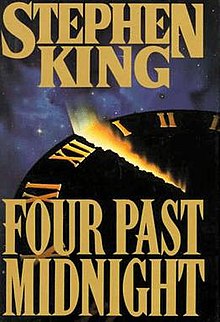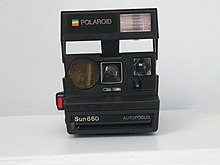
Secret Window is a 2004 American psychological thriller film starring Johnny Depp and John Turturro. It was written and directed by David Koepp, based on the novella Secret Window, Secret Garden by Stephen King, featuring a musical score by Philip Glass and Geoff Zanelli. The story appeared in King's 1990 collection Four Past Midnight. The film was released on March 12, 2004, by Columbia Pictures; it was a moderate box office success and received mixed reviews from critics.
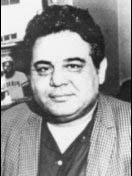
Samuel Joseph Byck was an American hijacker and attempted assassin. On February 22, 1974, he attempted to hijack a plane flying out of Baltimore/Washington International Airport, intending to crash into the White House in the hopes of killing President Richard Nixon. During the incident, Byck killed a policeman and a pilot, but was shot and wounded by another policeman before committing suicide.

Castle Rock is a fictional town appearing in Stephen King's fictional Maine topography, providing the setting for a number of his novels, novellas, and short stories. Castle Rock first appeared in King's 1979 novel The Dead Zone and has since been referred to or used as the primary setting in many other works by King.

Needful Things is a 1991 horror novel by American author Stephen King. It is the first novel King wrote after his rehabilitation from drug and alcohol addiction. It was made into a film of the same name in 1993 which was directed by Fraser C. Heston. The story focuses on a shop that sells collectibles and antiques, managed by Leland Gaunt, a new arrival to the town of Castle Rock, Maine, the setting of many King stories. Gaunt often asks customers to perform a prank or mysterious deed in exchange for the item they are drawn to. As time goes by, the many deeds and pranks lead to increasing aggression among the townspeople, as well as chaos and death. A protagonist of the book is Alan Pangborn, previously seen in Stephen King's novel The Dark Half.

The Assassination of Richard Nixon is a 2004 American drama film directed by Niels Mueller and starring Sean Penn, Don Cheadle, Jack Thompson and Naomi Watts. It is based on the story of would-be assassin Samuel Byck, who plotted to kill Richard Nixon in 1974. It was screened in the Un Certain Regard section at the 2004 Cannes Film Festival. The last name of the main character was changed to Bicke.
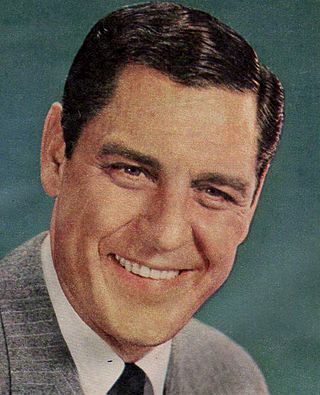
Craig Stevens was an American film and television actor, best known for his starring role on television as private detective Peter Gunn from 1958 to 1961.

Reunion is an American drama television series that aired on Fox in late 2005. The series was intended to chronicle 20 years in the lives of a group of six high school friends from Bedford, New York, with each episode following one year in the lives of the six, beginning with their high school graduation year 1986. Each episode also featured scenes in the present where Detective Marjorino is investigating the brutal murder of one of the group during the night of their 20-year class reunion in 2006. The identity of the murder victim was not revealed until the fifth episode, "1990".
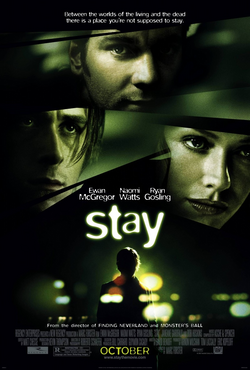
Stay is a 2005 American psychological thriller directed by Marc Forster and written by David Benioff. It stars Ewan McGregor, Naomi Watts, Ryan Gosling and Bob Hoskins, with production by Regency and distribution by 20th Century Fox. The film represents intense relationships centering on reality, love, death, suicide, and the afterlife.

Pet Sematary Two is a 1992 American supernatural horror film directed by Mary Lambert and written by Richard Outten. It is the sequel to the film Pet Sematary (1989), which was based on Stephen King's 1983 novel of the same name and the second film in the Pet Sematary film series. The film stars Edward Furlong, Anthony Edwards, and Clancy Brown. Pet Sematary Two was theatrically released in the United States on August 28, 1992, by Paramount Pictures and grossed $17.1 million worldwide. It received negative reviews from critics, but Brown's performance received critical acclaim.
Witness to Murder is a 1954 American film noir crime drama directed by Roy Rowland and starring Barbara Stanwyck, George Sanders, and Gary Merrill. While the film received moderately positive reviews, it ended up as an also-ran to Alfred Hitchcock's somewhat similar Rear Window, which opened less than a month later. The latter picture was a box-office hit.
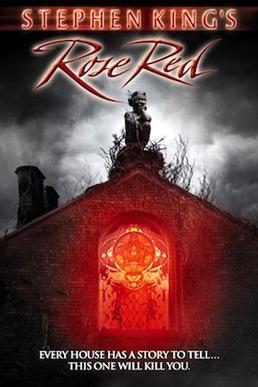
Rose Red is a 2002 American television miniseries scripted by horror novelist Stephen King, directed by Craig R. Baxley, and starring Nancy Travis, Matt Keeslar, Julian Sands, Kimberly J. Brown, David Dukes, Melanie Lynskey, Matt Ross, Emily Deschanel, Judith Ivey, and Kevin Tighe. It was filmed in Lakewood, Washington. The plot focuses on a reputedly haunted mansion located in Seattle, Washington, named Rose Red. Due to its long history of supernatural events and unexplained tragedies, the house is investigated by parapsychologist Dr. Joyce Reardon and a team of gifted psychics.
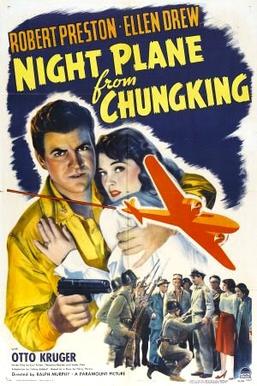
Night Plane from Chungking is a 1943 American war film released by Paramount Pictures, directed by Ralph Murphy, and produced by Michael Kraike and Walter MacEwen from a screenplay by Lester Cole, Earl Fenton and Theodore Reeves, adapted by Sidney Biddell from the 1931 story by Harry Hervey. The film stars Robert Preston and Ellen Drew, with Otto Kruger and Stephen Geray.

Superhero Movie is a 2008 American superhero parody film written and directed by Craig Mazin, produced by Robert K. Weiss and David Zucker, and starring Drake Bell, Sara Paxton, Christopher McDonald, and Leslie Nielsen. It was originally titled Superhero! as a nod to one of the Zuckers's previous films, Airplane!, in which Nielsen also starred.

The Langoliers is a horror miniseries consisting of two parts of 1½ hours each. It was directed and written by Tom Holland and based on the novella by Stephen King from the four-part anthology book Four Past Midnight. The series was produced by Mitchell Galin and David R. Kappes, for Laurel Entertainment, Inc. The miniseries originally aired May 14–15, 1995 on the ABC network.
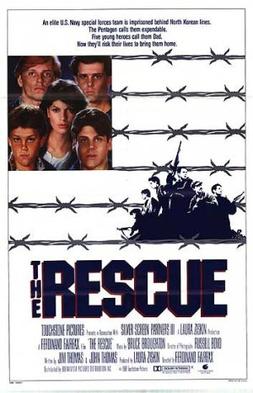
The Rescue is a 1988 American adventure film about a group of teenagers who infiltrate a North Korean prison to rescue their Navy SEAL fathers. It was written by Michael J. Henderson, Jim Thomas, and John Thomas, produced by Laura Ziskin, and directed by Ferdinand Fairfax. The film stars Kevin Dillon, Ned Vaughn, Marc Price, Charles Haid, Christine Harnos, Ian Giatti, and James Cromwell.
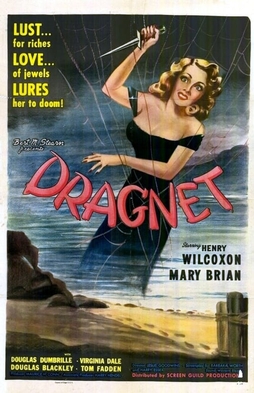
Dragnet is a 1947 American crime film directed by Leslie Goodwins and starring Henry Wilcoxon, Mary Brian, Douglass Dumbrille, Virginia Dale, Don C. Harvey, and Ralph Dunn. The screenplay was written by Barbara Worth and Harry Essex. The original music score was composed by Irving Gertz.

Movie 43 is a 2013 American anthology comedy film conceived by producer Charles B. Wessler. The film features fourteen different storylines, each one by a different director, including Elizabeth Banks, Steven Brill, Steve Carr, Rusty Cundieff, James Duffy, Griffin Dunne, Patrik Forsberg, James Gunn, Bob Odenkirk, Brett Ratner, Will Graham, and Jonathan van Tulleken. It stars an ensemble cast that is led by Banks, Kristen Bell, Halle Berry, Gerard Butler, Seth MacFarlane, Leslie Bibb, Kate Bosworth, Josh Duhamel, Anna Faris, Richard Gere, Terrence Howard, Hugh Jackman, Johnny Knoxville, Justin Long, Jeremy Allen White, Christopher Mintz-Plasse, Chloë Grace Moretz, Chris Pratt, Liev Schreiber, Seann William Scott, Emma Stone, Jason Sudeikis, Uma Thurman, Naomi Watts and Kate Winslet.
This is a list of winners of the Daytime Emmy Award for Outstanding Performer In An Animated Program. The award was presented between 1995 and 2021. It recognized a continuing or single voice-over performance in a series or a special. The performance generally originated from a Children's Animated, Special Class Animated Program.
"Sacrifice" is the twenty-third and final episode of the paranormal drama television series Supernatural's season 8, and the 172nd overall. The episode was written by Jeremy Carver and directed by Phil Sgriccia. It was first broadcast on May 15, 2013 on The CW. In the episode, Sam makes the ultimate sacrifice in order to complete the trials to lock the demons from Earth with the last trial being Crowley himself. Meanwhile, Dean allies with Castiel and Metatron ordered to finish the Heaven trials but they were ambushed by Naomi and her Angels, finally finding out what will happen when the spells are finished.
"Rush Call" is a short story by Stephen King. Originally published in his brother's self-published newspaper Dave's Rag in 1960, it was later collected in the 2000 work Secret Windows.
